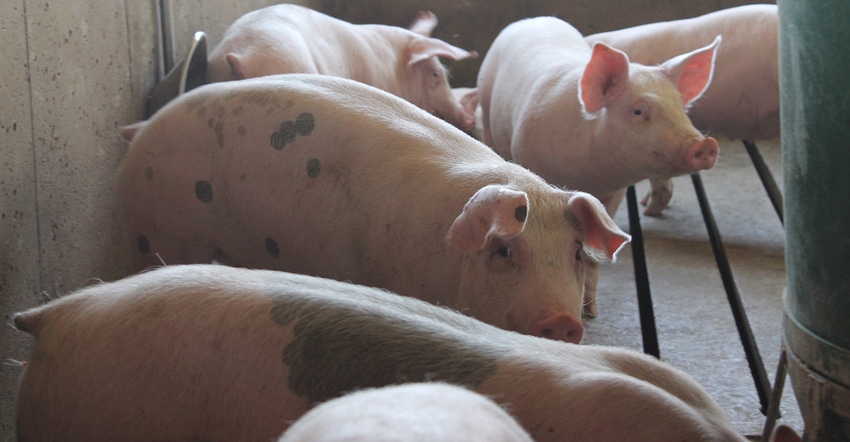Study revealed eight isolates were clustered together with a strain causing outbreaks with high mortality elsewhere.
June 17, 2020

Prior to September and October 2019, no high mortality events due to Streptococcus equi subspecies zooepidemicus in swine had been reported in the United States. Then outbreaks in Ohio and Tennessee at that time saw mortality up to 50% due to S. zooepidemicus septicaemia in those cases. While no additional outbreaks have been diagnosed domestically since last fall, the Swine Health Information Center saw a need for more information on this high mortality disease.
Consequently, SHIC funded a project conducted by researchers from Iowa State University and the National Veterinary Services Laboratory for a genomic epidemiological analysis on the limited occurrence. The study revealed eight isolates were clustered together with a strain causing outbreaks with high mortality elsewhere. This preparedness project equips the U.S. swine industry with needed detail should another S. zooepidemicus outbreak occur and has implications for understanding, tracking and possibly preventing related diseases as well.
S. zooepidemicus is most frequently isolated as an opportunistic pathogen of horses in the upper respiratory and lower genital tracts. It can also cause infections in a wide range of other animal species. The first high mortality event from S. zooepidemicus in North America was reported in Canada during March 2019.
From late-September to early October of 2019, three cases of cull sows and feeder pigs from Ohio and Tennessee were submitted to the Iowa State University Veterinary Diagnostic Lab. High mortality ranging from 10% to 50% in groups of pigs was reported over the period of eight to 10 days at the buying station in Ohio and similar high mortality (922 out of 2,222 sows in lairage) from an abattoir in Tennessee. The clinical signs included sudden death, weakness, lethargy and high fever. Splenomegaly and haemorrhagic lymph nodes were the most consistent macroscopic findings. Microscopic lesions were consistent with acute bacterial septicaemia. A laboratory diagnosis of S. zooepidemicus septicaemia was given, which was corroborated by histopathology, polymerase chain reaction and bacterial culture.
To genetically characterize S. zooepidemicus strains associated with high mortality and gain insights into the epidemiology of these highly unusual and unexpected outbreaks, researchers performed whole-genome sequencing on eight isolates from the Ohio and Tennessee outbreaks, another outbreak-unrelated swine isolate from Arizona, and 15 S. zooepidemicus isolates from other animal species. Three full-length complete genome sequences were further assembled, and genomic epidemiological and comparative genomic analyses were conducted.
Findings from this project provide significant and timely insights for a better understanding of the epidemiology and virulence of S. zooepidemicus isolates associated with highly unexpected and severe outbreaks that occurred very recently in the U.S. swine population. In addition, identification of specific virulence genes and genomic islands may lead to the development of novel molecular diagnostic tools, and provide the basis for future investigation of virulence mechanisms and control measures.
As the world deals with the COVID-19 pandemic, SHIC continues to focus efforts on prevention, preparedness and response to novel and emerging swine disease for the benefit of U.S. swine health. SHIC is funded by America's pork producers to fulfill its mission to protect and enhance the health of the U.S. swine herd.
Source: Swine Health Information Center, which is solely responsible for the information provided, and wholly owns the information. Informa Business Media and all its subsidiaries are not responsible for any of the content contained in this information asset.
You May Also Like



